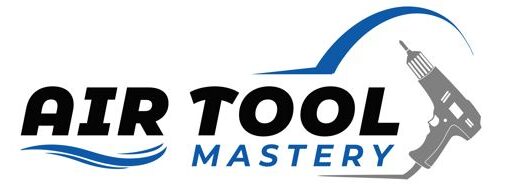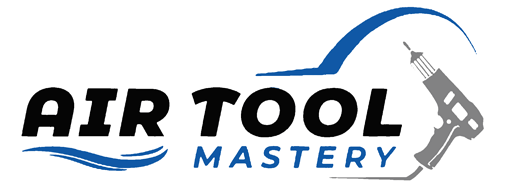Pneumatic paint pistols are must-have tools in a painter’s kit that use the power of compressed air to atomize paint, delivering it to surfaces with control and precision. These devices play a pivotal role in a wide variety of sectors. From auto repair shops, where they are employed for car painting, to construction sites for large-scale industrial projects, pneumatic paint guns ensure an efficient, even, and high-quality paint application.
Pneumatic pistols are also popular in artistic sectors for creating murals and other large artwork. Their importance cannot be underestimated as they significantly enhance productivity, offer high-quality finishes, and can cover large areas swiftly. This guide will delve into the intricate details of pneumatic paint guns, shedding light on their operation, benefits, and different types.
How Pneumatic Paint Pistols Work
In essence, pneumatic paint guns, also known as air sprayers, operate by using compressed air to propel paint onto surfaces. The key components of such guns include a paint basin, an air compressor, a trigger mechanism, and a nozzle.
The functioning of a pneumatic paint gun begins with the paint, which is held in the basin, being drawn up a tube using the suction power provided by the air compressor. The paint is then forced out of the gun through the nozzle when the trigger mechanism is activated.
The nozzle atomizes the paint, breaking it down into a fine mist that is directed onto the painting surface. This mist provides a smooth, evenly distributed layer of paint that can be more easily controlled than traditional brush painting, resulting in a professional-looking finish.
This efficient system allows for a faster painting process, covering significantly more area in less time than manual painting. In addition to this, the ability to adjust the air pressure provides painters with control over the paint flow, enabling them to achieve the desired paint effect with precision.
From a thin layer for a polished finish to a heavier coat for coverage, the versatility of pneumatic paint guns is beyond compare.
Types of Pneumatic Paint Pistols
There are two main types of pneumatic paint guns – HVLP (High Volume Low Pressure) and LVLP (Low Volume Low Pressure). The main difference between the two lies in the amount of air they use to atomize the paint.
HVLP guns require a higher volume of air at a lower pressure, making them more efficient and producing less overspray. This makes them ideal for painting larger surfaces and achieving a fine finish.
On the other hand, LVLP guns require less air at a lower pressure, making them more suitable for smaller projects or precision work. They also produce less overspray, resulting in less waste and a cleaner workspace.
Both types of guns have their own advantages and are suited to different types of painting jobs. It is important to choose the right type of gun for your specific project in order to achieve the best results.
Components of a Pneumatic Paint Pistol
Pneumatic paint guns have several components, each playing a specific role in the painting process.
- Air Compressor: This is the source of air that powers the gun and atomizes the paint.
- Paint Cup: Holds the paint and is attached to the gun’s body.
- Fluid Nozzle – Responsible for breaking the paint into tiny particles for a smooth finish.
- Air Cap: Controls the airflow and spray pattern of the gun.
- Trigger: Controls the paint flow and allows for precise application.
- Regulator: Adjusts the air pressure to control the paint flow and achieve different effects.
- Hose: Connects the gun to the air compressor and delivers air and paint to the gun.
- Body: Houses all the internal components and provides a comfortable grip for the user.
Proper Use and Maintenance of Pneumatic Paint Guns

1. Read the Manual
Before using your pneumatic paint gun, make sure to read the manufacturer’s manual thoroughly. This will provide you with important information, such as air pressure settings and recommended paints for use. Whenever an issue comes up with it, the manual will also serve as a valuable troubleshooting resource.
2. Use Quality Paints
To achieve the best results, it is important to use high-quality paints in your pneumatic paint gun. Lower-quality paints may clog the gun or cause uneven spray patterns, resulting in an unsatisfactory finish.
3. Clean After Each Use
After using your paint gun, it is crucial to clean it properly. This will prevent the buildup of paint residue and maintain the gun’s performance. Follow the manufacturer’s instructions for cleaning, and use appropriate cleaning solutions to avoid damaging the gun.
4. Store Properly
When not in use, store your pneumatic paint gun in a clean and dry place. This will protect it from dirt, moisture, and other contaminants that can affect its performance. Make sure to cover the gun with a cloth or protective case to prevent dust from settling on it.
5. Regular Maintenance
Regular maintenance is key to keeping your paint gun in top condition. This includes replacing worn parts, such as nozzles and seals, and lubricating moving parts. Again, read the manual for recommended maintenance schedules and procedures.
6. Safety Precautions
Always wear protective gear, such as gloves and goggles, when using a pneumatic paint gun. The high pressure of the air used can cause particles to fly at high speeds, so it is important to protect your skin and eyes from any potential hazards.
Common Problems and Solutions and How to Troubleshoot
Uneven Spray Pattern
This can be caused by clogged or worn nozzles, improper air pressure, or a damaged fluid tip. Clean or replace any damaged parts to fix this issue.
Paint Drips
If you notice paint drips or runs, it could be due to an incorrectly adjusted fluid tip or air pressure that is too high. Adjust these settings accordingly to achieve a smooth finish.
Leaking Paint
A leak can occur if the needle packing is worn or damaged. Replace this part as needed and make sure it is properly lubricated.
Air Leaks
If you hear a hissing sound coming from your paint gun, there may be an air leak. Check all connections and hoses for any cracks or loose fittings. Tighten or replace as needed.
In case you encounter an issue that you cannot troubleshoot and handle by yourself, it is always best to seek professional help or contact the manufacturer for assistance. Trying to fix a problem without proper knowledge and skills can lead to further damage or injury.
Conclusion
In summary, a pneumatic paint gun is an essential tool for a variety of paint applications, from automotive finishes to home renovations. This tool leverages the power of compressed air to atomize paint, subsequently delivering a smooth, even layer. Given its efficiency and precise application, the pneumatic paint gun is a favored choice among professionals and DIY enthusiasts alike.
However, it’s important to remember that the usage of such a tool also comes with its challenges. Issues that may arise include an uneven spray pattern, paint drips or runs, leaking paint, and air leaks. Fortunately, these problems can be addressed by regular maintenance, proper handling, and replacement of damaged parts.
Understanding the common problems and their respective solutions greatly enhances the effectiveness and longevity of the tool. Always prioritize safety when operating a pneumatic paint gun, by wearing protective gear and following recommended procedures. This tool, when utilized correctly, can offer an unparalleled painting experience.

